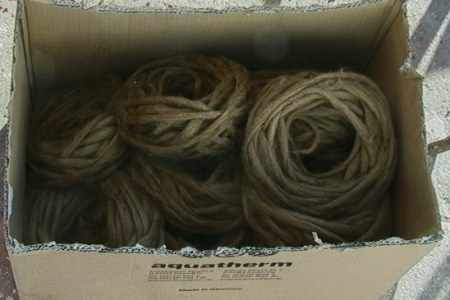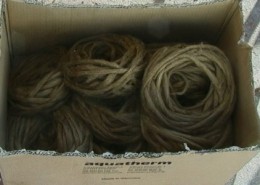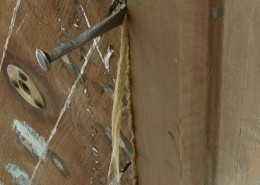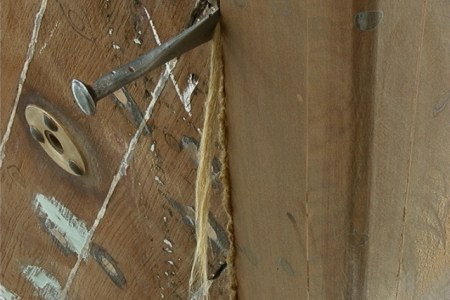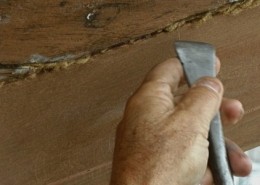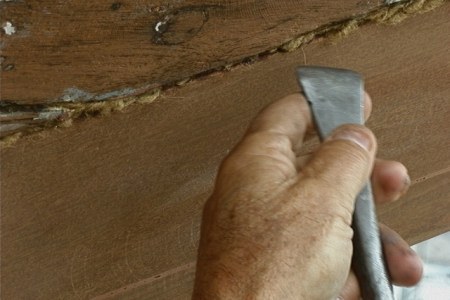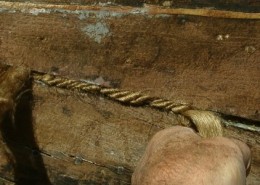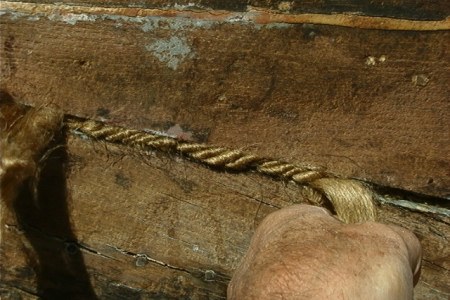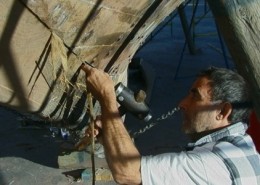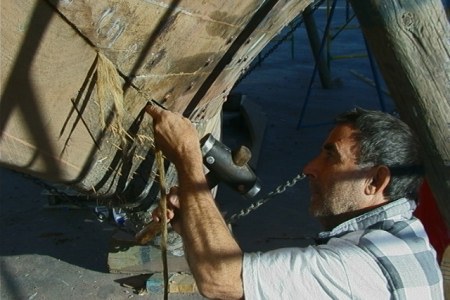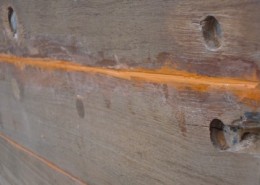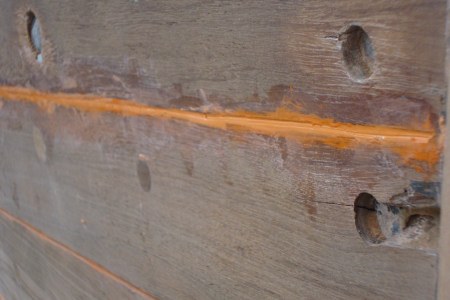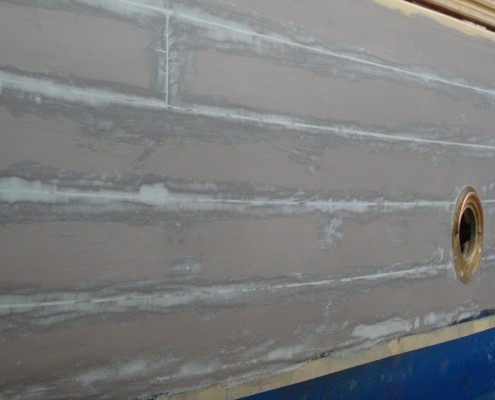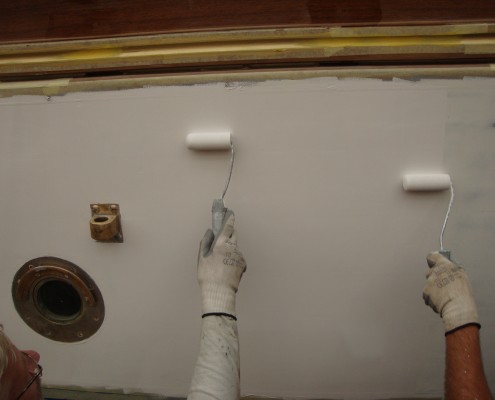Caulking, the traditional way
In 2004, on Palma de Mallorca, we did a re-caulking UWL of the new planks and restoring old damaged seams. This was done by Fransesco. A unique, 67 year old craftsman. He started at the age of 12, and continued this his whole working life. A man with a lot of experience. And funny too. He can tell you the secrets about caulking in the way it has to be done. Why you shouldn’t use to hard calking threads. Why it’s necessary to fill in the seams with the threads in layers.
Depending on the opening of the seams, we use two or three threads in these seams. One by one is carefully placed into the seam with turning movements. After caulking seams on bottom painted with red led paint and cemented with a special putty.
Above the water line the caulking have been checked and repairs done in the beginning of 2011.
Again on the traditional way.
The general recipe for linseed putty is to mix raw linseed oil and chalk until you have the right consistency: stiff but easy to knead. The traditional compound for stopping seams is mix this raw linseed oil putty with red led powder. the ratio is about 9 parts linseed oil putty to 1 part red lead with ‘a finger full of grease’. We added also 0,5 part of non synthetic high quality varnish, we used epifanes. It will give a red/salmon-ish color after its all been mixed up.
Be aware of not drying it out. If this started to happen, we use boiled linseed oil to thin it down. Sometimes you will want to up-speed the drying process by whiting (finely ground chalk) to dry it off. Also gives a better ‘skin’ which is why we used boiled oil rather than raw as the raw will not skin so easily.
But give the caulking putty enough time to dry and to form a smooth skin on top, before you start painting it over.
Always prime the seams and let it dry and sometimes in very wide seams we would re-prime and putty up onto the wet paint.
Sometimes you can use WD40, sprayed on the primed seams this still makes it “bite” and stick better, and afterward its good for smoothing over the top surface. ’to get a smooth pain-table surface.
UWL we painted the seams first with copperpaint, this is preventing any worms penetrating the wood.

